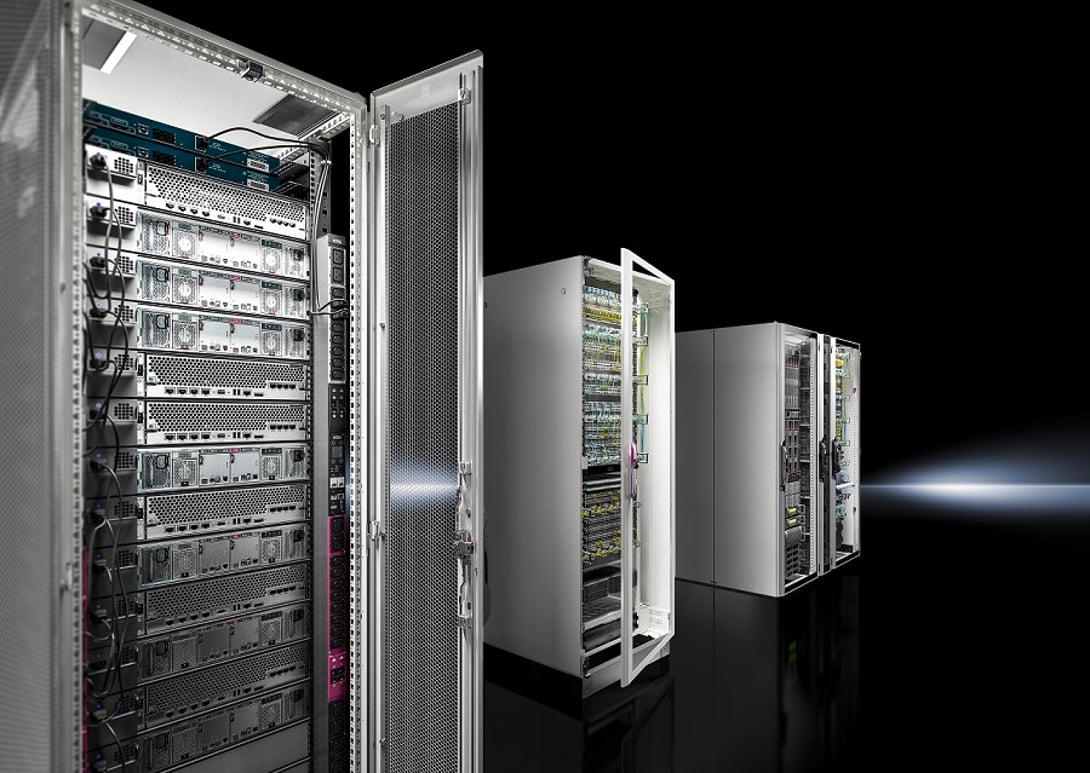
IT Racks - Meeting the Needs of Many
In response, we’re seeing a wealth of market innovations that are changing behaviours at home and at work. One fairly clear-cut example is the emergence of SMART factories which use IoT-enabled equipment. It is symptomatic of a dramatic and rapid shift in industrial practices, and one that is driving the demand for more IP-connected devices.
Added to which, of course, there is the challenge of keeping up with individual needs, particularly when these are multiplied many millions of times over.
Businesses across the IT supply chain are working hard to meet all these demands. Each organisation faces different pressures based on the services they provide, and inevitably much of this is passed on to IT equipment manufacturers and suppliers.
Data Centre Operators
Data centre operators and those providing cloud services have a balance to strike between responding to the demands of their customers and protecting critical infrastructure. Every market innovation brings its own risks, and these must be weighed against the benefits it might bring.
The process of evaluating the risks starts with a consideration of the rack and an
appreciation that a specifying a new rack can create problems as well as solve them. A rack’s fundamental core purpose remains to house and protect delicate components, so structurally, a rack needs to be strong, well designed, and robustly constructed. It should also be able to provide different environments, as well as protect cooling solutions, ensure good cable management, and offer high security locking and monitoring systems. Just as importantly, it needs to be adaptable to ensure it can respond to any changes in its surroundings.
Overall, an operator’s choice of rack could make a major difference to their organisations adaptability and create or avoid the need for costly replacements a few years down the line.
M&E contractors
While the protection of critical infrastructure is the primary aim of data centre operators, M&E contractors have other priorities not least making sure that installations are completed on time and within budget.
IT systems installations are a complex business, involving many products and components typically from a variety of sources. Added to which, there a recognised shortage of skilled workforce in the sector, which means the pressures on M&E contractors are rising.
At the very least, contractors need manufacturers to deliver products on time and, in many cases, at short notice.
Time- and resource-saving strategies equate to money in the bank, so the latest advances in pre-configured racks – some also with toolless accessories – are helping to simplify and speed-up the installation, as well as reduce the size of the on-site workforce.
Technical back-up and support is vital for contractors. While they are highly skilled at integrating IT products from multiple sources, many rely on manufacturers’ advice and guidance for a smooth installation – and not just in terms of how to fit the systems. Manufacturers can also work with contractors to explore solutions that deliver other benefits, including more efficiency, greater functionality and also cost-savings to the end user.
Project Managers
Project managing an installation requires a significant amount of organisation and
coordination to ensure everything is delivered on time. Reducing risks and having tight controls in place minimises the risk of going overbudget or adding lengthy delays.
If a project manager can reduce the number of decisions the installers have to make, they can speed up the installation and lower the cost.
The consultation period, which takes place before a brick is laid in a new data centre or IT room, should consider all potential obstacles posed by and around the hardware. Addressing these concerns early will make for a smoother build and future-proof the installation.
Changes as the build progresses are another issue that project managers must wrestle with. Racks with standard platforms which can be (re)configured with accessories allow project managers to adapt quickly and easily to any bumps in the road as the build progresses.
The advances in pre-configured racks which are tailored to an individual project’s
requirements, have been a major step forward. Meanwhile, managing the process of configuring the rack online before ordering not only makes the process far simpler and more convenient, it also allows managers to track the status of their deliveries – invaluable if they’re managing multiple projects. There is still a pressure, however, to offer a quick turnaround on rack orders; long lead times and special builds equate to more time and money. This is particularly true where a project manager is refitting an existing location although it’s typically less of an issue for new builds where the racks are often specified early in the process.
As we can see, pressures are mounting and they vary greatly across the IT supply chain. Being agile enough to adapt to these changes is the only way the sector can adequate respond to and satisfy the needs of the many.
Further information at www.rittal.co.uk and www.friedhelm-loh-group.com or on twitter @rittal_ltd.


